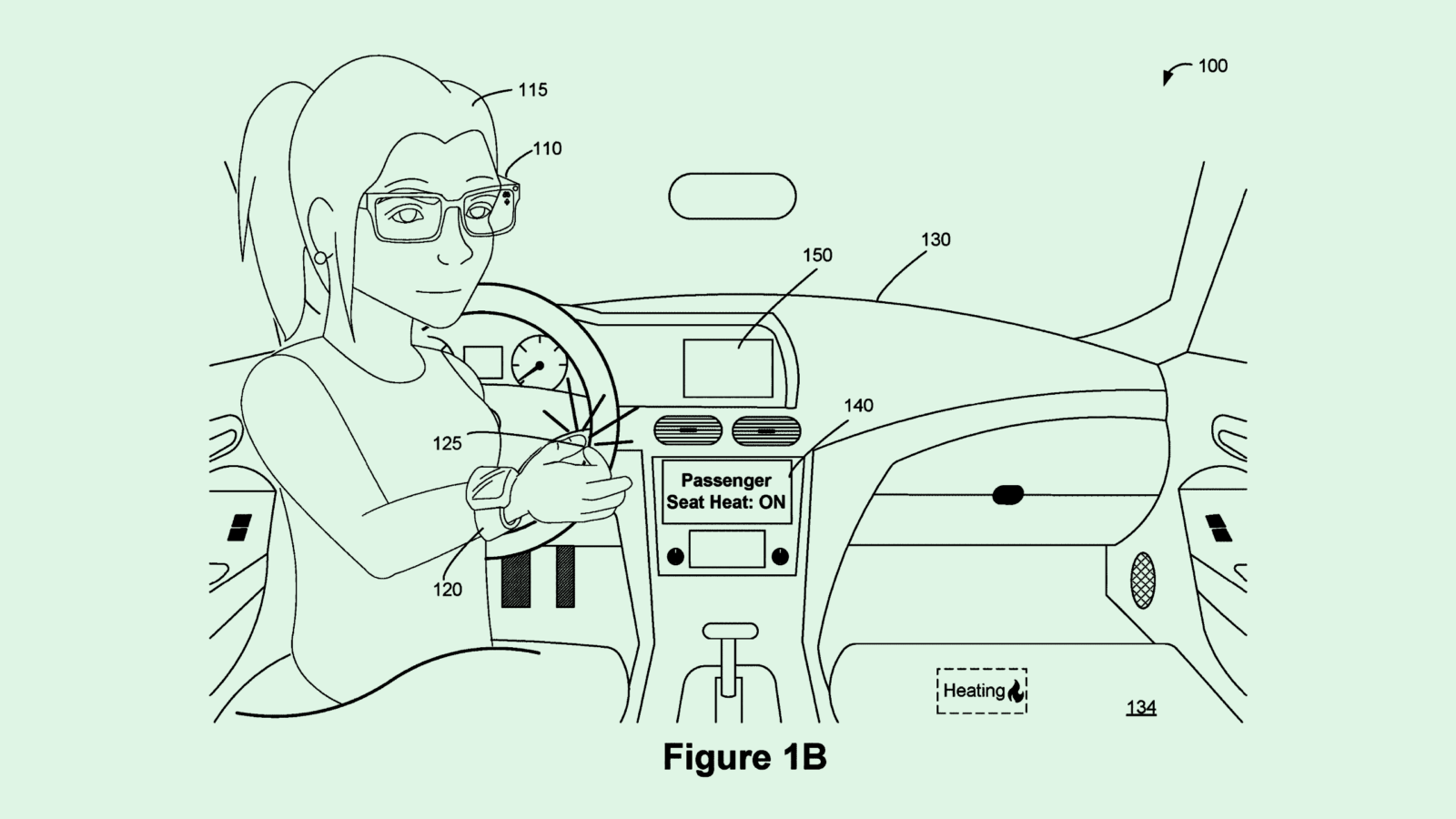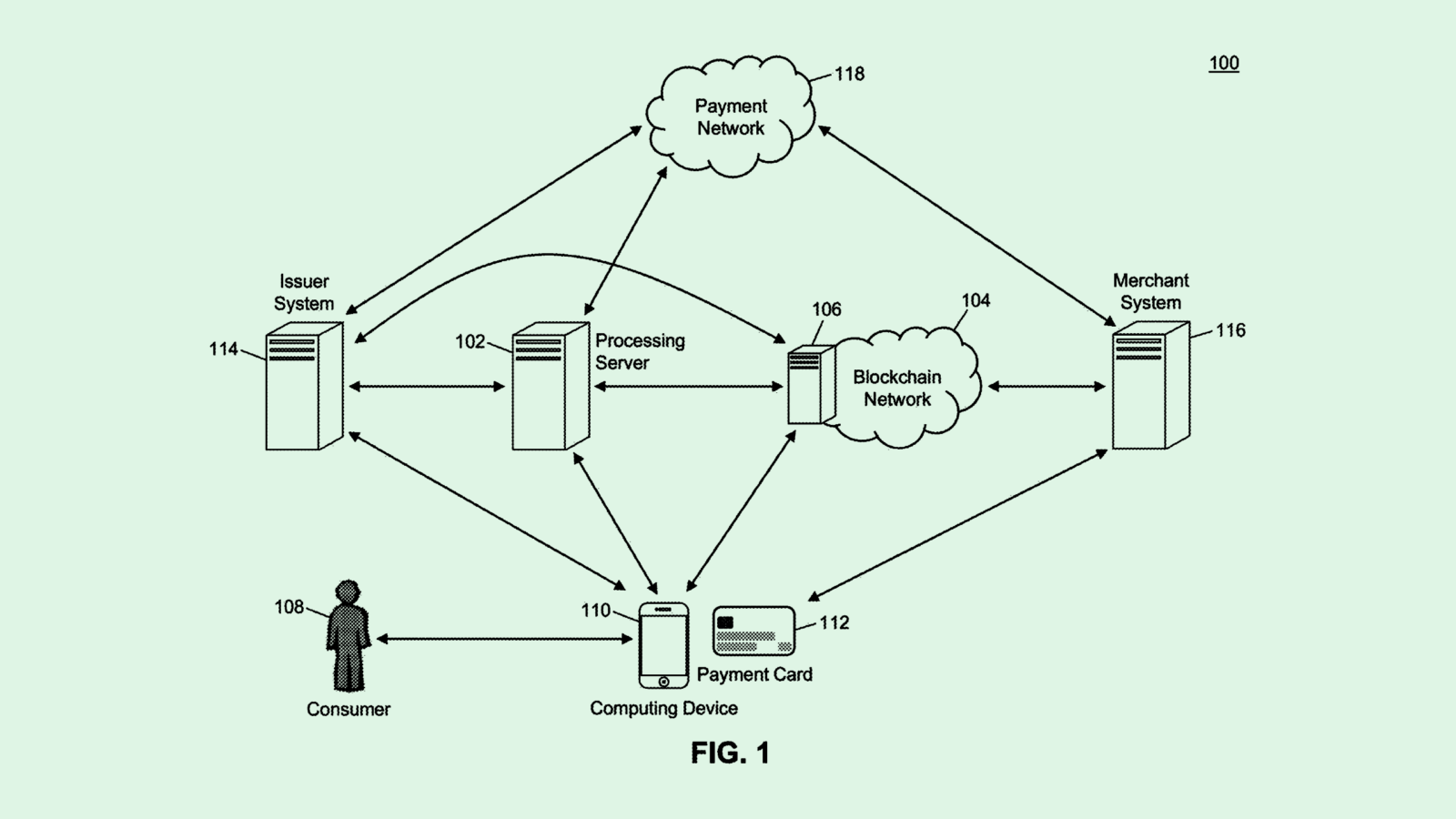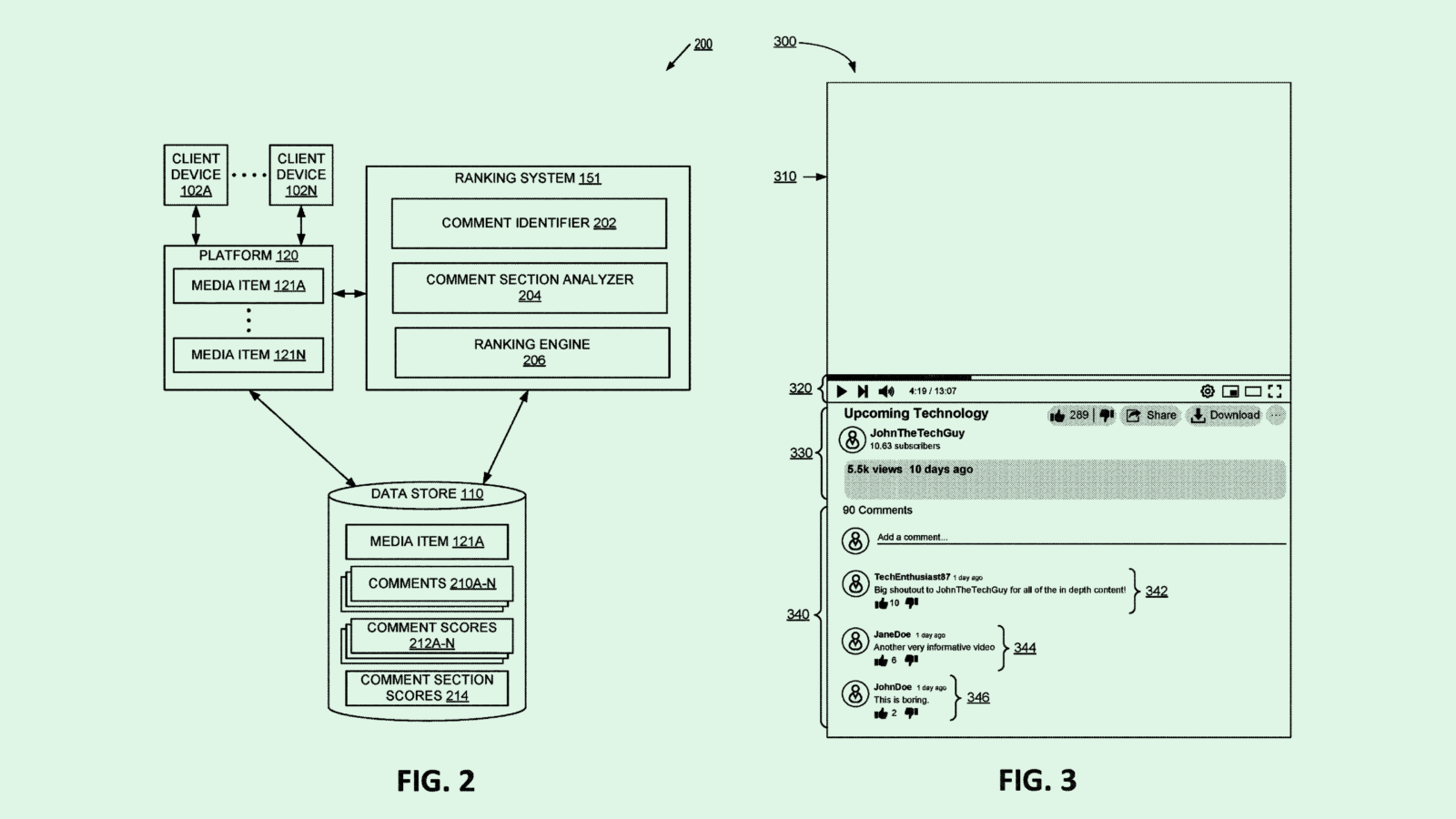Happy Thursday and welcome to Patent Drop!
Today, patents from Meta to take AR into the real world highlight the industry’s end goal of every-day adoption — and the roadblocks that stand in the way. Plus: Mastercard continues its blockchain patent spree, and Google gives YouTube an AI upgrade.
But before we get into it, a quick word from our sponsor, Incogni: Welcome to the modern age, where email inboxes are inundated with unsolicited “discounts” and every other phone call reads “Potential Spam.” A big source of this type of junk solicitation is attributable to data brokers, who wreak havoc on our digital privacy by mining and selling personal information to whoever will pay. The good news is – you can reclaim your privacy (and peace) with Incogni.
Patent Drop readers can get 55% off with code TDU55 at checkout.
Now, let’s dive right in.
Meta Gets Real
Meta wants you to be aware of your surroundings. The company filed several patents that detail ways in which artificial reality glasses and devices can interact with the world around you.
For starters, the company is seeking to patent a way to modify sound outputs “in response to determining a shift in attention.” This tech tracks a user’s gaze and alerts them when they’re not paying the necessary attention to tasks, such as driving or a video call.
“The individual who is driving may take a wrong turn or get into an accident, while the individual who is on the video conference may be less productive, lose a client, or be disciplined by their employer,” Meta said in the filing.
To recapture the attention of wandering eyes, Meta’s tech uses gaze-tracking sensors built into headsets, coupled with audio sensors that detect sound in the user’s environment, to determine where they are looking. If it detects that a user’s attention has shifted, the system will adjust the sound output by playing an alert or adjusting volume levels. The system may also provide haptic feedback, like vibration, through a smartwatch.
In addition to keeping users from crashing, Meta may want its tech to couple with cars: The company filed a patent for “EMG-based control for interacting with vehicles.” This combines the abilities of a smartwatch and smart glasses to pick up signals that control vehicle actions, such as changing the song or turning on the AC.
Similar to the previous patent, the tech’s goal is to reduce distraction, Meta said, and to allow the driver to “interact with their vehicle in an easy to use, frictionless, and socially accepted manner.”

Artificial reality is taking center-stage at Meta Connect this week. The company announced a new wireless virtual reality headset, the Quest 3S, as a cheaper alternative to the rest of the Quest line, and shared an upgrade to its Ray-Ban smart glasses, offering real-time AI video processing, reminders, and language translation.
The company also teased a “fully functional” prototype of its AR glasses, dubbed Project Orion, which CEO Mark Zuckerberg has called “the most advanced AR glasses the world has ever seen.” The glasses are operated via voice prompts and a wristband.
“From Ray-Ban Meta glasses to Orion, we’ve seen the good that can come from letting people stay more present and empowered in the physical world, while tapping into all that the digital world has to offer,” Meta wrote in its announcement.
While tech like this is hardly a surprise coming from Meta, these patents highlight that the company’s vision for AR lies in the real world, said Jake Maymar, AI strategist at The Glimpse Group. While a lot of the company’s focus is on virtual reality headsets for entertainment, “the end goal is AR, not VR,” said Maymar. “VR is a very lonely place.”
But Meta may face a number of hurdles in reaching that goal, said Maymar. In terms of the engineering, creating AR glasses that are long-lasting, fashionable, and work well is a difficult task. While components are gradually getting cheaper, smaller, and more efficient, he said, that full realization at scale is still realistically a few years out.
The company also lacks the infrastructure that another competitor, namely Apple, has aplenty. Should AR glasses be part of Apple’s vision, the iPhone maker has the benefit of being in everyone’s pocket, plus robust cloud technology, and a sticky device ecosystem, Maymar said. Meta, meanwhile, doesn’t have those luxuries.
“Meta’s devices are all disparate technologies,” he said. “Whereas with Apple … it’s all nicely integrated. Meta needs that.”
Then, of course, there’s the consumer. Getting the retail price down to something that an average consumer would willingly pay adds another obstacle, he said. Project Orion reportedly cost roughly $10,000 per unit to create. “I don’t know if the technology exists where it can be affordable.”
Remove Your Social Security Number From the Internet
Have you ever Googled yourself and been shocked by the amount of personal information that can be gathered with a simple web search? Blame it on data brokers – shady outfits that are making a business of collecting and selling your personal information to the highest bidder. Or, more likely, bidders!
Our friends at Incogni know that the internet is no place for your home address, SSN, or phone number. They are here to help you fight back by hunting down your sensitive data and scrubbing it from the internet.
Protect yourself from identity theft, robo calls, or scammers attacking your credit.
Take action now – enter code TDU55 at checkout to grab 55% off Incogni today.
Mastercard’s Crypto Crusade
Mastercard may be continuing its crypto bid: The credit card issuer filed two patent applications for systems to facilitate blockchain-based transactions.
First, the company sought to patent a system for “facilitating trustless payment transactions using smart contracts.” To put it simply, Mastercard’s filing describes a system for processing a blockchain transfer using a card payment network, which could allow it to facilitate seamless crypto transactions within its existing framework.
“There are a lack of systems for enabling a consumer to utilize blockchain currency in a transaction conducted with a payment card,” Mastercard said in the filing.
Mastercard’s tech first creates a smart contract within a blockchain network. Then, once both the computing system requesting money (such as a merchant) and the one sending it (the user’s bank) authorize a transaction, that smart contract is executed, and the agreed-upon sum of digital currency is transferred where it needs to go. This process is automatic and doesn’t rely on a middleman, making it secure and “trustless.”
Additionally, the company sought to patent a system for converting “digital assets to fiat currency.” This would make it easier to get cash for your crypto.
When a person wants to make a transaction, this system first validates that they’re authorized to make it, then determines the equivalent fiat currency for whatever amount of crypto they’re transacting.
Then, using a tactic called mirrored accounting, that transaction is copied onto a secondary blockchain designed to manage the conversion. This recording process makes transactions more traceable and transparent. Finally, the system confirms that the transaction was added to the secondary blockchain, and the fiat currency is transferred.

Mastercard has long sought to up its cryptocurrency chops. These filings add to a laundry list of patents for things like crypto wallet failsafe technology, blockchain ticketing systems, and fraud detection tech.
And earlier this month, the credit card firm announced that it’s launching a crypto debit card in partnership with digital asset exchange Mercuryo. The euro-denominated card allows users to spend their digital currencies at any of Mastercard’s 100 million merchants. In August, the company launched a pilot of a crypto-to-fiat card in partnership with blockchain platform MetaMask and crypto payments firm Baanx.
Though these cards are in early stages, Mastercard’s tech could make the process safer and more seamless for consumers, while also opening the door for merchants to accept the currency without hassle, said Jordan Gutt, Web 3.0 lead at The Glimpse Group.
Digital assets have a reputation for being volatile and complex. However, Mastercard’s involvement could help legitimize crypto in the broader scheme of traditional finance, Gutt said, and patents like these could help the firm build out its infrastructure before pushing for broader adoption.
Plus, locking down IP in this area could give Mastercard a lead over finance and tech firms, like Visa or PayPal, that also have an interest in crypto.
“If a known brand like Mastercard is continuing to innovate there, then there has to be a true use case,” said Gutt. “And right now, it’s difficult to use your crypto in the real world, but these patents could allow people to actually use them in day-to-day payments.”
YouTube’s AI Upgrade
Google wants to know how to keep you on YouTube.
The company is seeking to patent a way to determine a “time point of user disengagement” using “audiovisual interaction events.” Basically, Google wants to figure out when you’ve stopped paying attention.
If Google’s tech determines that you’ve stopped paying attention, it may adjust the output, such as pausing a video for you to resume later. To reach that determination, the tech calculates an “indication of a level of user engagement” through behavior on the user interface.
For example, if YouTube is open in one tab or browser window, but you’ve started scrolling, typing, or clicking in a different one, that data is fed to a machine learning model to conclude whether or not those behaviors signal that you’ve stopped listening.
Additionally, the company may be keeping a closer eye on the comment section. Google filed a patent application for “comment section analysis” of a content-sharing platform. This uses the comment section to determine whom a piece of content should be pushed to.
This system uses several different machine learning models to score a comment section, taking in data such as user demographics, satisfaction and sentiment analysis, text quality scores, and “emotion indicators.”
That analysis then helps adjust the ranking of that media. For example, if a video about gaming gets comments from several young users, that video may subsequently get pushed to more young users.

These patents aren’t the first indicator that Google is giving YouTube an AI upgrade. The company previously sought to patent AI-based content moderation technology that finds and limits “objectionable” content, as well as computer vision tech to identify products within videos for online shopping.
Earlier this month, the company announced generative AI tools for the video platform. At a company event called Made on YouTube, Google debuted AI-powered tools for creators, such as assistants to write titles, pick thumbnails, and even brainstorm entire concepts for videos, as well as access to Veo, its AI-generated video tool.
The company also recently began rolling out a conversational AI tool for YouTube Premium subscribers in the US who have Android devices: It allows them to ask questions about the videos they’re watching.
While these integrations make sense as Google continues to weave AI throughout its core businesses, AI models always run the risk of getting things wrong. Machine learning models tend to amplify biases and hallucinate mistakes — merging these models with a platform as ubiquitous as YouTube may magnify those issues.
Extra Drops
- Block wants to make sure you’re the one paying for your shopping spree. The point-of-sale firm filed a patent application for a way to detect “card sharing and fraud.”
- Ford is making sure all the parts are where they should be. The automaker is seeking to patent a way to detect and prevent “vehicle parts theft.”
- Google wants to learn your dialect. The tech giant wants to patent a way to control the “style of large language model(s)” during ongoing dialog.
What Else is New?
- OpenAI is considering restructuring to become a for-profit company. The news follows CTO Mira Murati and two other research executives stepping down.
- Google’s venture capital arm backed Distance Technologies, a company working to bring mixed reality to transparent surfaces like windshields.
- Klarna has partnered with payments firm Ayden to bring buy now, pay later tech to brick-and-mortar payments terminals
Patent Drop is written by Nat Rubio-Licht. You can find them on Twitter @natrubio__.
Patent Drop is a publication of The Daily Upside. For any questions or comments, feel free to contact us at patentdrop@thedailyupside.com.

